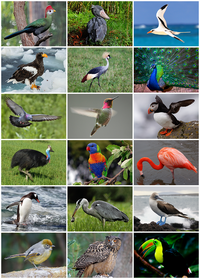
Photo from wikipedia
Many organisms build nests which create unique microhabitats that are exploited by other animals. In turn, these nest colonizers may positively or negatively influence nest owners. Bird nests are known… Click to show full abstract
Many organisms build nests which create unique microhabitats that are exploited by other animals. In turn, these nest colonizers may positively or negatively influence nest owners. Bird nests are known to harbor communities that include both harmful and possibly beneficial species. We quantified the nest arthropod communities of 10 bird species in Illinois, USA, along a land-use gradient, focusing on ant prevalence. We found eight ant species in nests, and for three species, at least part of their colonies inhabited nests. The odorous house ant (Tapinoma sessile (Say, 1836)) was the most common species and maintained the largest colonies in nest material. Forest-cover percentage surrounding bird nests best predicted ant-colony presence. There was little evidence that ant presence influenced abundance or prevalence of other arthropods within nests with the exception of Brown Thrasher (Toxostoma rufum (Linnaeus, 1758)) nests, where a negative association between T. sessile presence and abundance of fly larvae was found. Breeding success did not differ between nests with and without ant colonies for any bird species. Ant species that exhibit polydomy and nomadism may be more likely to occupy ephemeral resources like bird nests than other ants. How widespread this phenomenon is and the degree of commensalism that both parties experience is unclear and warrants further investigation.
Journal Title: Canadian Journal of Zoology
Year Published: 2019
Link to full text (if available)
Share on Social Media: Sign Up to like & get
recommendations!